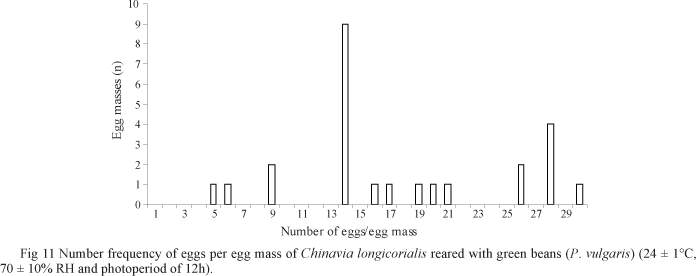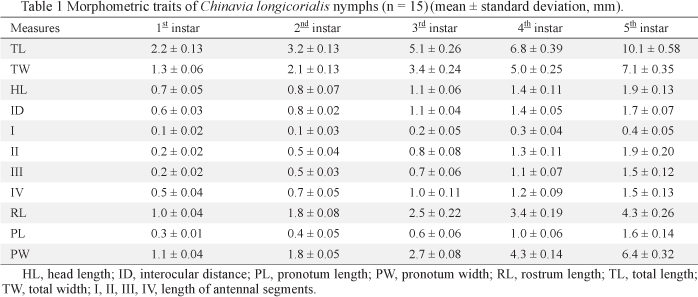Chinavia longicorialis (Breddin) is recorded only in Brazil, Argentina and Uruguay on host plants of at least three different families. Adults and nymphs were reared under standard controlled conditions (24 ± 1°C; 70 ± 10% RH; 12hL:12hD), and fed on green beans (Phaseolus vulgaris L.). Eggs and first instars of C. longicorialis are very similar to those of other species of Chinavia; however, the presence of orange maculae at the thoracic pleura is exclusive of first instars of C. longicorialis. Third to fifth instars have abdominal maculae divided by pseudo-sutures, a diagnostic feature of C. longicorialis nymphs. Light and dark morphs were observed for third, fourth and fifth instars. Head width measurements did not overlap between consecutive instars. The most frequent size of an egg clutch was 14; we suggest the adoption of the mode as the best and useful estimate of the egg clutch size for Pentatomidae. Average duration of the immature stages (egg to adult) was 39.4 ± 3.20 days. The high mortality observed from second to fifth instar (82.4%) and the lack of reproduction of the second generation indicate that green beans are unsuitable to proper development and reproduction of C. longicorialis by itself.
Green stink bug; egg; nymph; mortality; developmental time









